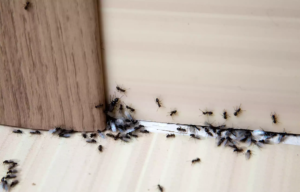Pests go where they have access to items for survival. Conditions in commercial environments that support pest livelihood are available due to heavier volume of traffic, movement of goods, product exposure, and storage diversity. Some industries face higher odds of infestations due to the nature of their operations, supply chain touchpoints, waste output, and layout patterns. Companies that know what types of businesses sit in high-risk segments can adopt proactive prevention. Many business owners underestimate how much structural access pests use through gaps, loading dock seals, drain lines, loose trim, utility penetrations, and unmonitored dumpster zones. But it is important to partner with a reliable pest control company like Presto Pest Control to ensure maximum protection. Business owners should learn more about the company’s service at prestopestcontrol.com. Below are various kinds of businesses that pests may invade:
Restaurants and Food Service Establishments
Restaurants and food service businesses have the highest vulnerability. A sighting of a pest can impact brand trust. But kitchens produce organic waste daily. Prep counters release food particles. Also, drains carry moisture, while dry storage rooms create ideal temperature pockets. Grease traps, mop sinks, floor drains, and walk-in cooler gaskets provide conducive conditions for pests. That is why the food industry is prone to infestations.
Warehouses and Distribution Centers
Warehouses form a direct funnel between suppliers and commercial endpoints. Pallets come from trucks that load from regional hubs, ports, farms, and other distributors. These pallets may carry pest hitchhikers. These pests will have a space to settle once they land in a large warehouse environment.
Rodents thrive in warehouse racking and tall shelving. Stored goods that sit for longer periods create nesting pockets. Cardboard holds cellulose, which many pests enjoy gnawing or breaching. A rodent that gains entry to a warehouse can travel through multiple rows and contaminate thousands of dollars in product. The risk increases of the warehouse stores food or nesting materials for rodents.
Hotels and Hospitality Sectors
Hotels face a high risk due to constant guest rotation and high bed-to-person ratio. Bed bugs are a major threat, but not the only pest issue in hotels. Ants, spiders, fabric pests, roaches, stored product pests, and rodents can occur in a hospitality environment that has frequent turnover and continuous luggage influx.
Luggage is a common pest transportation vehicle. Bed bugs travel more through passive hosts than any other source. They move from room to room in hotels through wall voids, headboard anchor zones, carpet tack strips, elevator shafts, and electrical outlets.
Tourism economy keeps hotels busy year-round, creating a constant risk of pest invasion. Without routine pest control, hotels lose ratings. Also, online reviews may drop, and corporate travel agencies may refuse to book blocks.
Grocery Stores and Supermarkets
Grocery stores have continuous food access for pests. These unwanted visitors benefit from produce as it holds moisture or deli cuts that drip protein residue. They may also attack bakery racks for the sugar trace or trash compactor zones to stay warm. Businesses will lose products without constant pest monitoring. Spoiled food becomes a major liability. Prices will go up while customer volume drops.
Medical Buildings, Clinics, and Senior Care Facilities
Healthcare facilities represent a unique segment because of the risk that contaminants in these settings present. These buildings cannot afford airborne pathogens from pest waste or body fragments. Rodent urine, roach droppings, and insect debris hold bacteria. Senior care facilities also maintain a food supply full day due to meal services. The presence of pests a healthcare setting undermines patient safety.
Schools, Universities, and Educational Facilities
Educational institutions store snacks, hold cafeteria service, maintain locker zones, utilize art supplies, and experience constant backpack movement. Mouse activity is common in schools due to structural age and classroom food residue. Also, roaches hide in book storage rooms, science labs, and faculty break rooms. Ants find kitchenettes and staff coffee prep areas.



